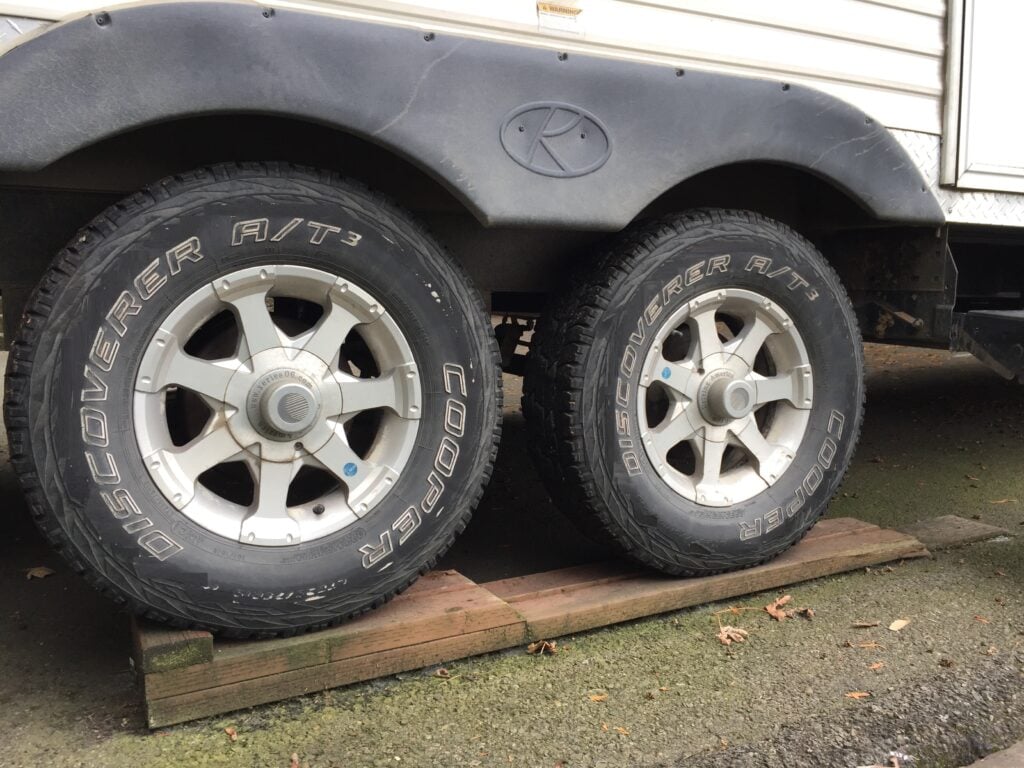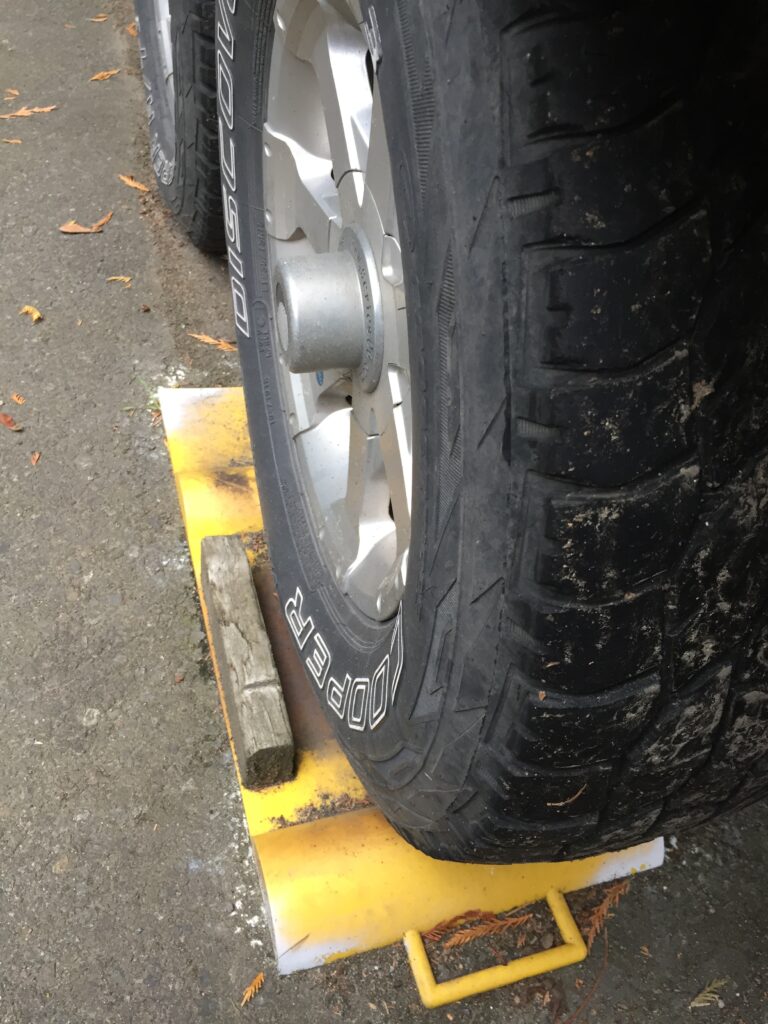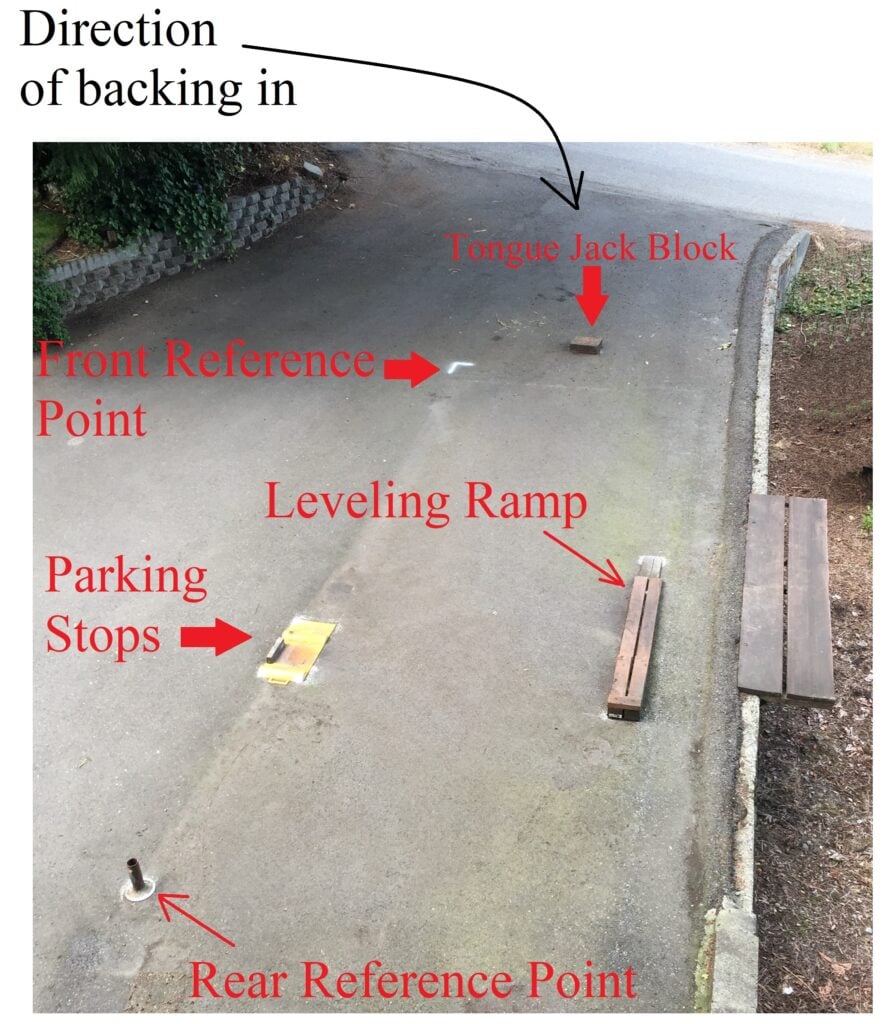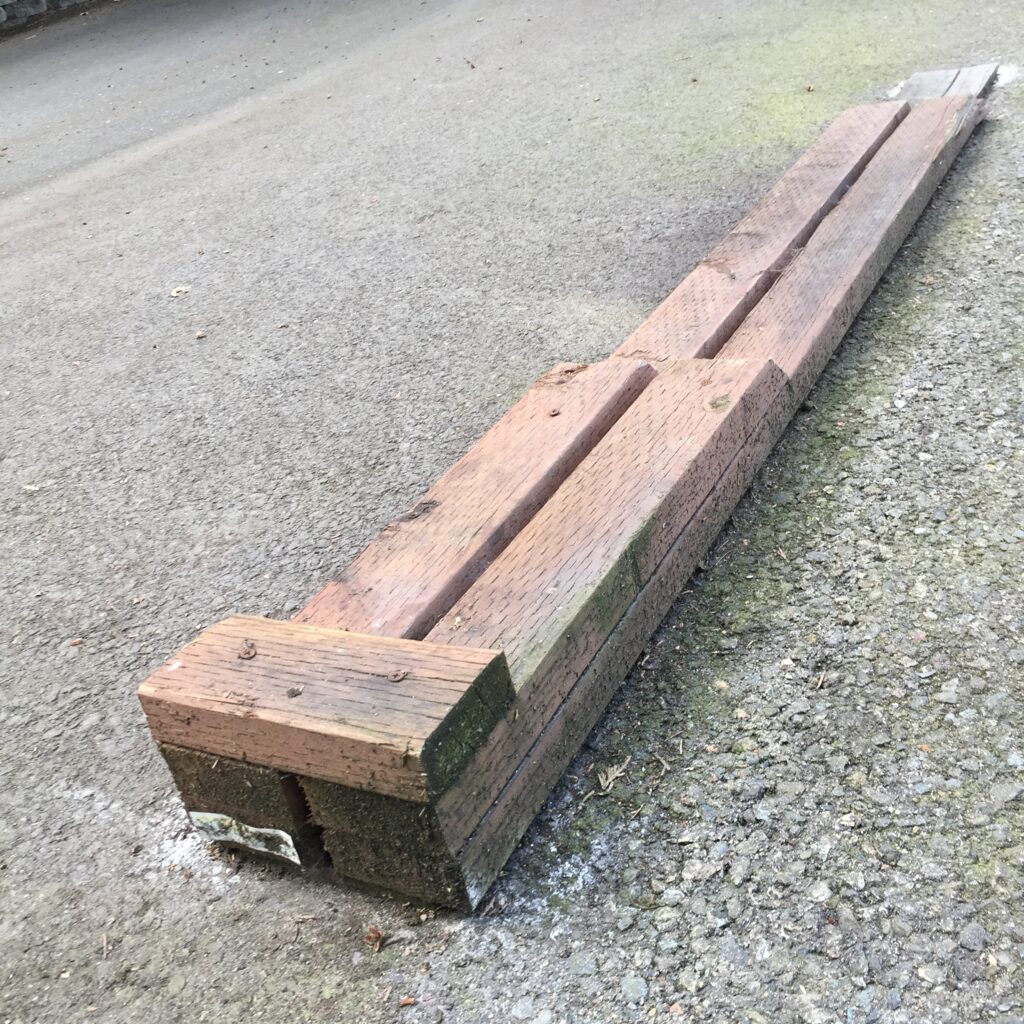While many RVers pay to store their RVs in a storage lot when not in use, I am fortunate that I can park my travel trailer in my driveway for free. However, this is somewhat of a challenge as I live on a steep dead-end street which requires backing my trailer into its space at a sharp angle while in a bind. In addition, there is a retaining wall on my blind side (passenger side) I could drop off while backing into the space if not careful.
Through the years I have made upgrades to my parking space that not only guide me into the space but assure that the RV ends up parked level too, allowing the refrigerator to operate prior to or after returning from a trip. Here are some of the improvements I’ve done that you might be able to utilize as well.

Leveling and stop blocks
On the low (not visible) passenger side of my RV, I have constructed a three-tier leveling ramp that levels my RV side to side as I back onto it. The first tier is a cedar (slow to rot) 1” x 6” board. The RV tire can easily be backed onto this without it kicking out of position.
Once weight from the RV, via the tire, is applied to the 1” x 6”, the whole ramp becomes stationary and will not move as the RV is backed onto the second and third tiers, which are treated 2x4s with beveled ends to allow the tires to bump up onto the next level. Finally, there is another 2×4 screwed crosswise across the end to act as a wheel stop.
On the high (visible) side of the RV, I have a plastic pad with parking stops on both ends of it that cradles the rear driver’s side tire of the RV when parked.
When I back over the first stop and approach the second (back) stop, this lets me know I have backed far enough into the space. In addition, I have screwed a small board to the outer side of the pad as a side-to-side reference point.
If I negotiate the rear tire within an inch or so of the board, I know the passenger side tires of the RV (which I can’t see) are centered on the leveling ramp.

Reference marks
I have several reference points that help guide me into the space and assure that I am approximately 2 feet parallel to the retaining wall (which I can’t see) and not backing the trailer off of it.
In addition, the reference marks assure that I am lined up to successfully back onto the leveling ramp and parking stops mentioned above. The first reference mark is painted on the asphalt where the front driver’s side corner of the trailer is to end up.
My goal is to back the driver’s side tires over the mark while turning and aligning the rear corner of the trailer with a second elevated reference point, where the rear corner of the trailer is to end up.

If I do my job right, the rear tire will end up in the parking cradle with the front and rear driver’s side corner of the RV positioned above the two reference points. In addition, the passenger side tires will be centered on the leveling ramp and the tongue jack will be directly above the block I keep in place, which allows me to extend the tongue jack high enough to snap up the equalizing bars.
Between sun fade and rain dripping off the roof over the years, a clear outline has formed on my driveway asphalt giving me additional clues on where the driver’s (visible) side of the RV should end up.
I hope these tips I have shared will help others easily back their RVs into somewhat tricky parking spots where they regularly store their RVs, because damaging your RV while backing into a parking spot is one adventure in RVing no one needs to experience!


Great simple ideas… thanks for the pix and details … I do similar now for mine.
Dave …. You went to a lot of work to produce this piece. It is very much appreciated. I am having to kiss coat-tails of my HOA to allow me to park next to my house like several of my neighbors. We have a desert landscaped gravel lot, like many RV parks, and they want a concrete pad (NOT PAVERS!!) before they will consider. They say, “Didn’t you read your CCR’s?” I told them I never liked Credence Clearwater Revival. They have no SOH, Sense Of Humor.
Great ideas, I just purchased my first RV TT and have a tight driveway to get into, plus there are 3 cul-de-sacs beyond my driveway so with about 15-18 homes so if I block the street it won’t belong before I’m in someones way. P.S. on the pavers, they are more “green” than a concrete pad, allows water to get to the soil rather than additional run-off.
I put a 2 inch receiver on the front of my truck so now I drive the TT onto its parking spot which is a tight right 90 degree turn off the driveway. No backing.
Peter your a genius-what a great idea. Happy and safe camping!
Peter you are the MASTER! 👍
Peter. Please elaborate on the installation of your front hitch. I drive an F-150. Many years ago, I had a friend who did the same to a 1960 Cadillac that he used to pull a Boles Aero. And RC, thanks for the drainage talking point for Pavers.
Any suggestions for backing my 28 ft class C down 16 ft wide drive way and turning the sharp corner to miss the garage and not hit Neighbors house? Looking for low profile dolly or rollers to back the rear tires onto and then pull the backend away from garage. Suggestions?
Michael